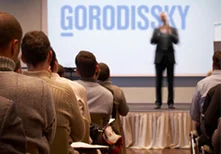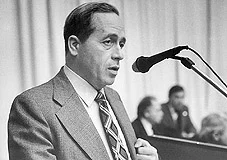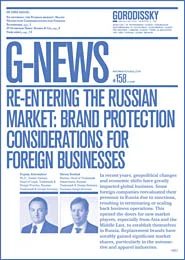What constitutes proper use of the trademark? Non-use cancellation actions in Russia
27 October 2020Almost every jurisdiction provides for a number of grounds for early termination of a trademark registration, and many countries allow challenging trademark registration on non-use grounds where the trademark has not been used for several consecutive years. Russia is not an exception – the Russian legislation sets the general requirement to use the registered trademark, in order to maintain the exclusive right to it. It helps to ensure the real functioning of the registered designations on the Russian market.
The rules and practice of consideration of non-use cancellation actions have been developed within the recent years.
In Russia trademark non-use disputes come under the exclusive jurisdiction of the IP Court. Exemption concerns the non-use cancellation actions where the trademark owner undergoes an insolvency proceeding. The most recent ruling of the Plenary Session of the Supreme Court on application of the part 4 of the Civil Code, as of April 23, 2019 No. 10, clarified that a Commercial court examining the bankruptcy case, is entitled to examine the non-use cancellation action. Moreover, it is clarified that until completion of the bankruptcy proceedings the cancellation of the trademark on the ground of non-use is not available. The contrary would be directed against the creditors of the debtor (the rights holder), since cancellation of the trademark would lead to its removal from the bankruptcy assets, while its sale would facilitate the maximum possible satisfaction of the requirements of the creditors.
Further to the amendments of the Russian law, starting from July 2017 prior to filing a nonuse claim with the IP Court a party having a legitimate interest in cancelling the mark, must send a pre-trial proposal to the trademark owner demanding either to abandon the trademark or assign it (partially or with respect to all goods and services, for which the mark is protected).
The introduction of the pre-trial procedure in Russia changed the way of calculation of the non-use period. Now the trademark owner shall prove the use of the trademark within three years preceding the dispatch date of the pretrial proposal. Use started after the proposal would not be considered by the court as a proper use of the challenged mark.
The non-use cancellation claim can be filed with the IP Court of Russia no earlier than two months after sending the pre-trial proposal and within thirty days after expiration of the said two-month term. Failure to bring a lawsuit within that period of time does not affect the right to demand cancellation of the trademark, but the whole pre-trial process should be started from the beginning: a new demand letter can be forwarded only in three months after sending the previous one. In the event of non-compliance with this procedure, the IP Court would not accept the lawsuit for consideration and return it to the plaintiff.
Despite the fact that the law establishes two ways to solve the dispute amicably – assignment or abandonment of a trademark – the current court practice is more broadly related to the question of where the pre-trial procedure can be considered to be observed. Thus, according to practice of the IP Court of Russia, the above legal provision cannot be interpreted as obliging an interested party to acquire an exclusive right to a disputed trademark beyond the will of such interested party. Instead, the law gives room for the parties to settle the matter in a way that suits for both of them – for example, the interested party has the right to ask for a letter of consent in his pre-trial proposal, or to conclude a coexistence agreement, etc. – as the main purpose of the institute of pre-trial settlement is that the right holder of the disputed trademark learns about the existence of the dispute and, if there is appropriate will, can resolve it amicably.
The burden of proof of the use of the trademark in the non-use cancellation proceedings lies with the rights holder indicated as such in the respective trademark register.
What constitutes proper use of the trademark under the Russian law?
The Civil Code states that the trademark shall be used by the rights holder or by his licensee (acting under the license agreement recorded with the Trademark Office), or, by another person using the trademark under control of the rights holder (without the recorded license).
According to the current practice, the IP Court recognizes the use of the trademark by the contracting party, subsidiary, or affiliated company to the rights holder as the use under control.
It is not sufficient to present an agreement or just some catalogue or advertisement showing the trademark, in order to prove its proper use in Russia. It is important to provide the court with a clear chain of documentation showing marketing of the trademarked goods/services in Russia – starting with the local or foreign producer of goods, its distributor, and ending with the consumer of such goods on Russian market.
According to the law, it is necessary to provide the evidence of use in respect of the goods/ services the trademark is registered for, and in respect of which the cancellation claims were filed. If there has been use on some of the goods/services, such use will be ineffective. At the same time, when the trademark is registered for a generic category (e.g. clothing), its use in respect of a specific product (e.g. t-shirts) allows to keep the registration for the entire generic term.
Exception to the rule concerns the famous trademarks. In respect of such marks confirmed use of the trademark in respect of some of the goods/services allows its owner to retain the trademark for the similar goods/services. In order to prove that a trademark is famous, its right holder may present evidence regarding the volumes of sales of branded products in Russia, promotion materials, opinion polling etc.
The law provides that the trademark owner has to use the mark as it is registered and indicated in the trademark certificate (i.e. without any significant modifications). The use of the trademark with modifications (with change of certain elements of the mark) can be recognized as its proper use only if those modifications do not change the essence of the trademark and do not limit the scope of protection associated with the mark. In other words, insignificant changes that do not affect distinctive features of the mark could be accepted although it should be kept in mind that there are no clear cut criteria as to how to distinguish between significant and insignificant changes what may become a matter of dispute in some cases. The question as to whether the alterations change the essence of the mark or not is left to the court’s discretion and is to be decided by the panel of judges in each particular case.
As a rule, the acceptable amendments are those which relate to the print of letters (e.g. change from the capital letters to lower case letters or vice versa), change of color of the mark (except for the cases when the color is a distinctive element of the trademark), adding/removal of non-protected elements (simple lines, numerals etc.), use of the word element of the combined trademark without image or with different image (if the word element is a dominant and distinctive element of the trademark) etc.
With respect to this rule and in order to avoid disputes, which may arise from the use of the modified trademark, it is advisable to secure protection of the trademark as it is actually used or will be used in the future (all possible versions).
Another essential condition for maintaining legal protection of the trademark is its “genuine” (not token) use. The law does not contain a legal definition of the term “genuine use”. However, the recent ruling provides certain guidelines to establish it. When deciding on whether the use of the disputed trademark is genuine or not, the court has to examine all aspects of its use, including the volumes of sales of the trademarked goods. At the same time, a small volume of the goods alone cannot definitely indicate that the sole purpose of the rights holder was to preserve the right to the trademark. Such a conclusion is possible only upon evaluation of all pieces of evidence showing presence of the goods on the market.
Finally, when deciding on early termination of legal protection of a trademark as a result of its non-use, evidence provided by the rights holder that the trademark was not used due to circumstances beyond his control may be taken into account by the court. As such circumstances the court has accepted:
- Bankruptcy proceedings initiated against the rights holder.
- War.
- Unlawful arrest of bank account of the rights holder.
- Long-term sickness of the Individual entrepreneur – owner of the trademark.
- A glacier melt and landslides which destroyed the hot spring and railway thereto.
- Earthquakes.
- Judicial acts/decisions forbidding the rights holder to use the trademark.
Given that the rights holder proved by appropriate and sufficient documents that his business activity was actually paralyzed by those events, no license could be granted to the third party.
If the court recognizes the existence of such circumstances this period shall not be counted within the three-year period.
As experience shows, the parties of non-use cancellation proceedings use the possibilities of the pre-trial settlement quite often and successfully, which allows avoiding court fees and delays in trademark registration process, however, if the case goes to court, the approaches to assessment of evidence of use of trademarks have become clearer thanks to the guidelines of the Supreme Court.
The practice of consideration of non-use caseshas developed very much within the recent severalyears. Nonetheless, the IP Court continues to form its approaches in consideration of non-use matters depending on the actual circumstances of cases, which may be complicated by very many factors such as use of the trademark with alterations, under control of the trademark owner which can hardly be evidences, for a part of registered goods/services. The issue of recoveringjudicial expenses in non-use cancellation proceedings raises lots of questions as well.










